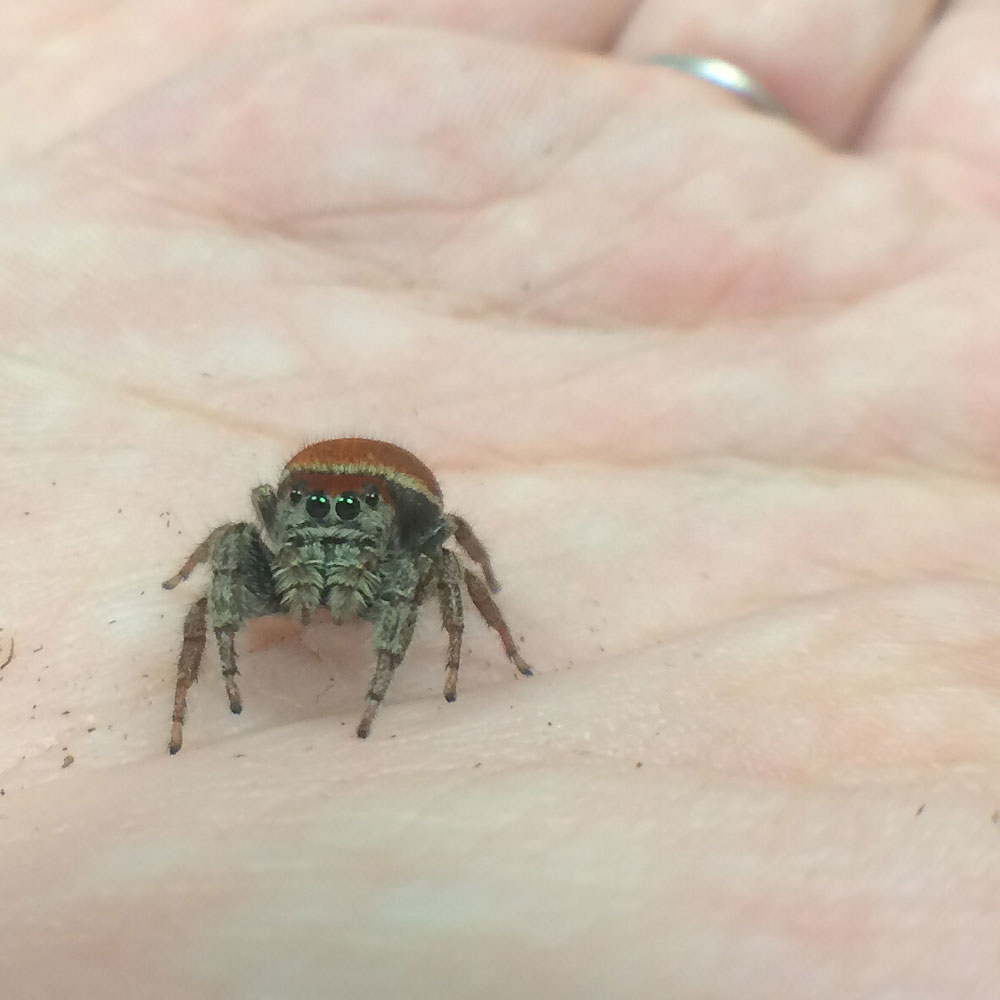Making your skin crawl for science: UF's bug zoo

You can tell you're not in a typical office by the maggots hanging from the ceiling. Then your eye travels down to the doll-size bed spattered with bloodstains, and behind it, the tank full of flesh-eating beetles and the skeletal remains of their last meal.
It sounds like a haunted house, but it’s all designed to inspire a love of science: specifically, bugs.
The maggots are giant-size models made of panty hose and rubber bands. The doll bed helps people understand how to find and avoid bed bug infestations. And the corpse-cleaning dermestid beetles? They’re six-legged recruiters for forensic entomology class, where students learn to solve crimes with bugs.
In glass tanks and plastic containers lining the countertops and shelves of the office are the star attractions: the residents of the University of Florida’s arthropod petting zoo. On a given day, their keepers – entomologists Rebecca Baldwin and Erin Powell – might be helping preschoolers pet a scorpion or placing a tarantula on the president’s lapel for a photo op.
They’re happy to share an office with giant cave cockroaches and a 30-gallon bin of squealing Bess beetles – not just because they think bugs are cool, but because they get to share their excitement with people who see bugs as something to squash, not pet.
At fairs and festivals, retirement homes and summer camps, these scientists are spreading the word that arthropods are interesting and useful. They reach about 80,000 people a year: They’ll even be at the Homecoming game, offering Gator fans close encounters with their critters before kickoff.
“The idea of the petting zoo is to spark an interest in science,” Baldwin explains. “When scientists want to know how something in the nervous system works, how insulin is produced or if a nutritional supplement can protect against concussions, they use insects as model organisms. We want people to appreciate how amazing they are.”

Some of the zoo’s residents, like the Chaco golden knee tarantula, were rescued when their owners could no longer keep them as pets. Others are native species, such as the golden silk orb-weaver – known to many Floridians as a banana spider – that Powell lets crawl up and down her arms to demonstrate its harmlessness.
“We socialize them by holding them and touching them until they know we’re not a threat, but this one hasn’t been handled before. They’re just not that scary in the first place,” Powell says.
The bugs in the zoo are not altered to remove their stingers or venom – the scorpions could still sting or pinch, the spiders could still bite. They just don’t. Baldwin does have a scorpion scar – a tiny red dot at the base of one finger – “but it didn’t hurt – and we’ve never had one inject venom. They’ve only given us dry stings.”
Powell has confidence in the bugs they’ve chosen and her knowledge of their behavior. Take Lola, for example, a five-inch, jet black Asian forest scorpion. She's content to be pet throughout an all-day event without showing any signs of stress.
“I rely on being able to read her. The kids are never in danger.”
Baldwin and Powell also know their secrets. They know that Lola and her kind glow under ultraviolet light. That the Bess beetles work together to raise their young. That the smaller a scorpion’s claws are, the more painful a wallop it can pack with its stinger. They hope that by sharing what they know, they will help people will appreciate bugs more and fear them less. Some of them will even be inspired to try an entomology course. Entomology majors go on to work not just in pest management but in food safety, ecotourism and health professions – quite a lot of them develop their fine-motor skills pinning insects and go on to dental school, Baldwin says.
She knows that plenty of the people they talk to won’t want to forge a closer relationship with bugs. But at least they’ll be more aware of the world of activity that’s whirring by over their heads, beneath their feet and, quite possibly, in their kitchen cabinets.